 |
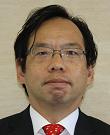 |
 |
 |
|
Professor |
Associate |
Associate Professor |
Assistant Lecturer |
|
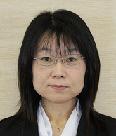 |
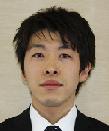 |
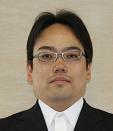 |
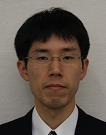 |
|
Assistant Professor |
Assistant Professor |
Assistant Professor |
Assistant Professor |
|
 |
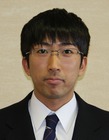 |
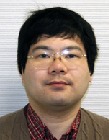 |
||
Assistant Professor |
Assistant Lecturer |
Assistant Lecturer |
- Aizu Research Cluster for Space Science üEüERC-SpaceüEüEbr>
ARC-Space was inaugurated on April 1, 2009, with an aim to become a base which
provides software to support geological explorations, in relation to Japan ŌĆÖs deep
space exploration projects, taking advantage of the UniversityŌĆÖs spirit of innovation in information science.
- Aizu Research Cluster for Environmental InformaticsüEüERC-EnvironmentüEüEbr>
On May 1, 2009, ARC-Environment was officially inaugurated. One of the missions
of ARC-Environment is to realize comfortable and convenient ŌĆüEsustainable
information society, ŌĆüEtaking into account coexistence with natural surroundings.
ŃĆĆToward this goal, ARC-Environment will promote innovative research on environmental
informatics and develop new technology for environmental forecasts.
- Aizu Research Cluster for Medical Engineering and Informatics üEüERC-MedicalüEüEbr>
ARC-Medical officially started its activities on September 1, 2009.
In recent years, drastic advancement in medical areas has accelerated trans-disciplinary and multi-disciplinary characters of research in medical areas. ŃĆĆUnder these circumstances, ARC-Medical will concentrate efforts onŌĆüEexit research ŌĆØto give back research achievements directly to society.
Taking advantage of the University ŌĆÖs expertise in information science, ARCMedical will promote practical and useful research in medical areas, while tightening relations with medical departments of universities in Japan, including Fukushima Medical University, medical institutions, private firms and governments.
Also, an emphasis will be placed on education of individuals competent in playing a leading role in software development for promising medical areas.
The Research Center for Advanced Information Science and Technology (CAIST) was established in April 2009. Interlaboratory research teams called ŌĆØclusterŌĆüEwere respectively established for three emphasized fields of research, Space Science, Local Environment, and Medical Engineering. Research will be promoted to meet social needs, so that CAIST can contribute to development of local industries and creation of new businesses, based on its achievements. |
Refereed Journal Papers
| [chonda-01:2009, yoshiko-05:2009] |
T. Morota, J. Haruyama, C. Honda, M. Ohtake,
Y. Yokota, J. Kimura, T. Matsunaga, Y. Ogawa, N. Hirata, H. Demura,
A. Iwasaki, H. Miyamoto, R. Nakamura, H. Takeda, Y. Ishihara, and
S. Sasaki. Mare volcanism in the lunar farside Moscoviense region: Implication
for lateral variation in magma production of the Moon. Geophysical
Research Letters, 36:L21202, 2009. |
| Accurate estimates of the duration and volume of extrusive volcanism of the Moon
are essential for understanding the lunar thermal evolution. Here, using new highresolution
images obtained by the SELENE Terrain Camera, we determined the
thicknesses and ages of basalts in Mare Moscoviense, one of the most prominent mare
deposits on the farside. Mare volcanism in Mare Moscoviense was active for at least -
1.5 Ga following the formation of the Moscoviense basin. Mare basalts are estimated
to be at least 600 m thick, corresponding to a total volume of 9; 500 ŌłüE16; 000km3.
The long duration and large volume of extrusive volcanism are plausibly attributed
to the thinner crust of the Moscoviense basin relative to those of other farside
basins. From a comparison with mare volume within a same-sized nearside basin,
we concluded that a magma production in the farside mantle was 3-10 times less
than that of the nearside. |
|
| [chonda-02:2009, yoshiko-04:2009, kitazato-02:2009] |
M. Ohtake, T. Matsunaga, J.
Haruyama, Y. Yokota, T. Morota, C. Honda, Y. Ogawa, M. Torii,
H. Miyamoto, T. Arai, N. Hirata, A. Iwasaki, R. Nakamura, T. Hiroi, T. Sugihara,
H. Takeda, H. Otake, C. M. Pieters, K. Saiki, K. Kitazato, M. Abe,
N. Asada, H. Demura, Y. Yamaguchi, S. Sasaki, S. Kodama, J. Terazono,
M. Shirao, A. Yamaji, S. Minami, H. Akiyama, and J.-L. Josset. The global
distribution of pure anorthosite on the Moon. Nature, 461:236ŌĆüE40, 2009. |
| It has been thought that the lunar highland crust was formed by the crystallization
and floatation of plagioclase from a global magma ocean, although the actual generation
mechanisms are still debated. The composition of the lunar highland crust is
therefore important for understanding the formation of such a magma ocean and the
subsequent evolution of the Moon. The Multiband Imager on the Selenological and
Engineering Explorer (SELENE) has a high spatial resolution of optimized spectral
coverage, which should allow a clear view of the composition of the lunar crust. Here
we report the global distribution of rocks of high plagioclase abundance (approaching
100vol.%), using an unambiguous plagioclase absorption band recorded by the
SELENE Multiband Imager. If the upper crust indeed consists of nearly 100vol.%
plagioclase, this is significantly higher than previous estimates of 82-92vol.% (refs
2, 6, 7), providing a valuable constraint on models of lunar magma ocean evolution. |
|
| [chonda-03:2009] |
N. Hirata, O. S. Barnouin-Jha, C. Honda, R. Nakamura, H. Miyamoto,
S. Sasaki, H. Demura, A. M. Nakamura, T. Michikami, R. W. Gaskell, and
J. Saito. A survey of possible impact structures on 25143 Itokawa. Icarus,
200:486ŌĆüE02, 2009. |
| We determined the morphologies and dimensions of possible impact craters on the
surface of Asteroid 25143 Itokawa from images taken by the Hayabusa spacecraft.
Circular depressions, circular features with flat floors or convex floors, and circular
features with smooth surfaces were identified as possible craters. The survey identified
38 candidates with widely varying morphologies including rough, smooth and
saddle-shaped floors, a lack of raised rims and fresh material exposures. The average
depth/diameter ratio was 0:08┬▒0:03: these craters are very shallow relative to
craters observed on other asteroids. These shallow craters are a result of (1) target
curvature influencing the cratering process, (2) raised rim not being generated by
this process, and (3) fines infilling the craters. As many of the crater candidates have
an unusual appearance, we used a classification scheme that reflects the likelihood of
an observed candidateŌĆÖs formation by a hypervelocity impact. We considered a variety
of alternative interpretations while developing this scheme, including inherited
features from a proto-Itokawa, spall scars created by the disruption of the proto-
Itokawa, spall scars following the formation of a large crater on Itokawa itself, and
apparent depressions due to random arrangements of boulders. The size-frequency
distribution of the crater candidates was close to the empirical saturation line at
the largest diameter, and then decline with decreasing diameter. |
|
| [chonda-04:2009, yoshiko-02:2009] |
T. Morota, J. Haruyama, H. Miyamoto, C. Honda,
M. Ohtake, Y. Yokota, T. Matsunaga, N. Hirata, H. Demura, H. Takeda,
Y. Ogawa, and J. Kimura. Formation age of the lunar crater Giordano
Bruno. Meteoritics & Planetary Science, 44:1115ŌĆüE120, 2009. |
| Using the Terrain Camera onboard the Japanese lunar explorer, SELENE (Kaguya),
we obtained new high-resolution images of the 22-kilometer-diameter lunar crater
Giordano Bruno. Based on crater size-frequency measurements of small craters
(< 200 m in diameter) superposed on its continuous ejecta, the formation age of
Giordano Bruno is estimated to be 1 to 10 Ma. This is constructive evidence against
the crater ŌĆÖs medieval age formation hypothesis |
|
| [kitazato-01:2009, yoshiko-01:2009] |
R. Nakamura, T. Matsunaga, Y. Ogawa, S. Yamamoto,
T. Hiroi, K. Saiki, N. Hirata, T. Arai, K. Kitazato, H. Takeda,
T. Sugihara, S. Kodama, M. Ohtake, J. Haruyama, and Y. Yokota. Ultramafic
impact melt sheet beneath the South Pole-Aitken basin on the Moon.
Geophysical Research Letters, 36(22):L22202,doi:10.1029/2009GL040765,
2009. |
| The Spectral Profiler onboard the Japanese lunar explorer Kaguya conducted the
first hyperspectral survey around the South Pole-Aitken basin (SPA) on the Moon
that is one of the largest impact structures in the Solar System. The radiative
transfer modeling revealed that fresh crater central peaks inside SPA are commonly
composed of an ultramafic assemblage dominated by Magnesium rich orthopyroxene,
suggesting a homogeneous layer buried under SPA. The extensive ultramafic layer
could be a relic of a gigantic impact melt pool produced by the SPA-forming impact.
The preponderance of orthopyroxene could have resulted from significant fractional
crystallization of the lunar magma ocean prior to the onset of plagioclase floatation. |
|
| [sampe-01:2009] |
T. Sampe and S.-P. Xie. Large-scale dynamics of the Meiyu-Baiu rainband:
environmental forcing by the westerly jet. Journal of Climate, 23:113ŌĆüE134, 1 2010. |
| In this paper we studied dynamics of the formation of Meiyu-Baiu rainband, which
appears in early summer over China and Japan and brings about lots of rain. This
paper was reviewed by two anonymous reviewers and an editor. |
|
| [yoshiko-03:2009] |
J. Haruyama, M. Ohtake, T. Matsunaga, T. Morota, C. Honda,
Y. Yokota, M. Abe, Y. Ogawa, H. Miyamoto, A. Iwasaki, C. M. Pieters,
N. Asada, H. Demura, N. Hirata, J. Terazono, S. Sasaki, K. Saiki, A. Yamaji,
M. Torii, and J.-L. Josset. Long-lived Volcanism on the Lunar Farside
Revealed by SELENE Terrain Camera. Science, 323:905ŌĆüE08, 2008. |
| We determined model ages of mare deposits on the farside of the Moon on the basis
of the crater frequency distributions in 10-meter-resolution images obtained by the
Terrain Camera on SELENE (Selenological and Engineering Explorer) (Kaguya).
Most mare volcanism that formed mare deposits on the lunar farside ceased at 3.0
billion years ago, suggesting that mare volcanism on the Moon was markedly reduced
globally during this period. However, several mare deposits at various locations on
the lunar farside also show a much younger age, clustering at 2.5 billion years ago.
These young ages indicate that mare volcanism on the lunar farside lasted longer
than was previously considered and may have occurred episodically. |
Refereed Proceeding Papers
| [chonda-05:2009] |
T. Morota, J. Haruyama, M. Ohtake, T. Matsunaga, Y. Yokota, C.
Honda, T. Sugihara, J. Kimura, Y. Ishihara, T. Kawamura, A. Iwasaki, K.
Saiki, and H. Takeda. Mare Volcanism on the Farside and in the Orientale
Region of the Moon. In 41st Lunar and Planetary Science Conference,
p.1309, 2010. |
| Dating of lunar mare basalts is necessary for understanding the volcanic history of
the Moon. Here we performed new crater counts in mare deposits on the farside and
in the Orientale region, using new images obtained by SELENE Terrain Camera. |
|
| [chonda-06:2009, yoshiko-07:2009] |
S. Morita, N. Asada, H. Demura, N. Hirata andJ. Terazono,
Y. Ogawa, C. Honda, and K. Kitazato. Approach to Crater Chronology
with Fourier Transform of Digital Terrain Model. In 41st Lunar and
Planetary Science Conference, page 1687, 2010. |
| We validated the effect of crater position, diameter and number using the transformed
images and their average values. As a result, it showed fourier transform of
DTM may be able to be used for geological age estimation instead of crater counting. |
|
| [chonda-07:2009, yoshiko-06:2009] |
N. Hirata, J. Haruyama, M. Ohtake, T. Matsunaga,
Y. Yokota, T. Morota, C. Honda, Y. Ogawa, K. Kitazato, Y. Shibata, T. Sugihara,
H. Miyamoto, H. Demura, and N. Asada. Remote Sensing Study of a
Large Lunar Crater Jackson. In 41st Lunar and Planetary Science Conference,
page 1585, 2010. |
| We investigated a large lunar crater Jackson with LISM/SELENE data to reconstruct
the impact event forming the crater from distributions of its ejecta and other
associated features. |
|
| [chonda-08:2009,yoshiko-09:2009] |
C. Honda, J. Haruyama, M. Ohtake, T. Matsunaga,
T. Morota, Y. Yokota, Y. Ogawa, H. Demura, N. Hirata, and N. Asada, On
the formation process of Vallis Schr┬©oteri. In American Geophysical Union,
Fall Meeting 2009, abstract #P23C-1291, 2009. |
| The Vallis Schr┬©oteri exists on the Aristarchus Plateau (305ŌłüE13ŌŚ”E,(22ŌłüE0ŌŚ”N) which
is the highland of the Moon consisting of the crustal material. The rille appears
a singular sinuous rille as meandering primary rille including a more meandering
inner rille. The negative meandering relief with no apparent levees should be formed
by erosional mechanism of turbulent and sustained lava flow which was originated
from higher area of the plateau. The depth profile of a rille is thought to be a key
morphological parameter that may be closely associated with the formation of the
rille. Using the newly acquired data, DTM of Kaguya, we measured the depth which
was derived from subtracting floorŌĆÖs height of the rille from rimŌĆÖs height (surrounding
groundŌĆÖs height) of the rille as a function of distance from vent-like feature which is
usually in a circular crater or in an elongated crater, sometime called a ŌĆ£cobra head
craterŌĆüE The aspects of primary rille of Vallis Schr┬©oteri are 155 km in length from end
to end, up to 6.0 km in width, and 500 m in depth (up to 750 m). In addition, our
data suggests that the aspect of inner rille is Ōł╝240 km in length except for the lacking
in its feature, 1.0 km in width, and 150 m in depth. Our goal of this research is to
evaluate the erosional effect of the emplacement of lunar lava flow, and to estimate
volcanic temperature of lava flow to produce the rille. As a result, we suppose that
the Vallis Schr┬©oteri could be made by the lava flow with high temperature more than
liquidus, which is consistent with the study of volcanic temperature on the Moon
by other researchers. |
|
| [chonda-09:2009, kitazato-03:2009, yoshiko-15:2009] |
Y. Yokota, T. Matsunaga, M,
Ohtake, J. Haruyama, R. Nakamura, S. Yamamoto, Y. Ogawa, T. Morota,
C. Honda, K. Saiki, K. Nagasawa, K. Kitazato, S. Sasaki, A. Iwasaki, H.
Demura, and N. Hirata. Refinement of Lunar Vis/NIR Phase Curve Acquired
by SELENE Spectral Profiler. In 41st Lunar and Planetary Science
Conference, p.2532, 2010. |
| The SELENE Spectral Profiler (SP) acquired lunar visible to NIR spectral data at
a spatial resolution of 500 m. we report refined results of the phase curves derived
from SP data. |
|
| [chonda-10:2009,yoshiko-13:2009] |
T. Matsunaga, M. Ohtake, J. Haruyama, S. Yamamoto,
Y. Ogawa, R. Nakamura, Y. Yokota, T. Morota, C. Honda, M. Abe,
T. Nimura, T. Hiroi, T. Arai, K. Saiki, H. Takeda, N. Hirata, S. Kodama,
T. Sugihara, H. Demura, N. Asada, J. Terazono, and H. Otake. Updates on
Scientific Results and Products of SELENE Spectral Profiler. In 41st Lunar
and Planetary Science Conference, p.2242, 2010. |
| Updates on scientific results and products of the SELENE Spectral Profiler (SP) will
be given. Scientific results highlight recently published papers and ongoing research.
Status of available products and a plan for future products will be presented. |
|
| [chonda-11:2009, kitazato-04:2009, yoshiko-14] |
JW. Kawamae, N. Hirata, K. Kitazato,
N. Asada, H. Demura, Y. Ogawa, C. Honda, and J. Terazono. Development of 3D Web-based Data Archive for Hayabusa Mission. In 41st Lunar and
Planetary Science Conference, page 1687, 2010. |
| Data archive with more interactive interface for searching the data of Hayabusa
mission is desired. The three-dimensional model allows users to search the specific
area data of irregular shape body. |
|
| [kitazato-05:2009] |
K. Kitazato, M. Abe, D. Kuroda, and M. Yoshikawa. Photometric
observations of Hayabusa follow-on mission targets. In European Planetary
Science Congress 2009, number #399, September 2009. |
| In order to design the detailed mission scenario, information about physical properties
of the potential mission targets is required. However, such information obtained
up to date is still limited so that we have performed the ground-based routine measurement
of lightcurves and spectra for the potential mission targets having a low
delta-V required for a spacecraft rendezvous. Observational Program |
|
| [kitazato-06:2009] |
Y. Kobayashi, M. Ohtake, J. Haruyama, T. Matsunaga, T. Iwata,
T. Morota, Y. Yokota, S. Yamamoto, and K. Kitazato. Estimating composition
of dark mantle deposit in Schr┬©odinger basin using Selene spectral data.
In 41st Lunar and Planetary Science Conference, number #1636, March
2010. |
| Dark Mantle Deposit (DMD) regions are considered to contain glassy or crystallized
pyroclastic beads. We used the spectrum data acquired by SELENE Multi-band
Imager to analyze a DMD in Schr┬©odinger basin, and estimated the composition of
the DMD. |
|
| [kitazato-07:2009] |
T. Okada, T. Fukuhara, R. Nakamura, T. Sekiguchi, S. Hasegawa,
K. Kitazato, M. Taguchi, T. Imamura, J. Helbert, and Hayabusa2 Mid-
Infrared Imager Team. Mid-infrared imaging for surface thermal inertia and
material of near-Earth asteroid in Hayabusa-2. In 41st Lunar and Planetary
Science Conference, number #2132, March 2010. |
| A mid-infrared imager is now proposed for thermal emission imaging of a C-class
NEO in Hayabusa-2. The instrument is based on the LIR (long-infrared imager)
onboard Akatsuki, adding a 8-point filter wheel will extend its observational function
for material classification. |
|
| [oku-01:2009] |
Atsushi Kobayashi Shinya Oku and Gregg Meyer. A Progress Report on
the Launch of JapanŌĆÖs National Chronic Disease Prevention Program. In
DMAA, 2009. |
| [yoshiko-08:2009] |
J. Terazono, R. Nakamura, S. Kodama, N. Yamamoto, H. Demura,
N. Hirata, Y. Ogawa, J. Haruyama, M. Ohtake, T. Matsunaga, T. Suzuki,
and T. Hayashi. WISE-CAPS: An Integrated and Secure Web-based Environment
for Analysis and Browsing of Lunar and Planetary Data. In 41st
Lunar Planet. Sci., p.1516, March 2010. |
| We are now constructing a Web-GIS based framework called ŌĆØWISE-CAPS,ŌĆüEa virtual
research environment to share and browse the data under secured data access.
This presentation will address on current implementation status and future prospective. |
|
| [yoshiko-10:2009] |
H. Takeda, S. Kobayashi, A. Yamaguchi, M. Otsuki, M. Ohtake,
J. Haruyama, T. Morota, Y. Karouji, N. Hasebe, R. Nakamura, Y. Ogawa,
and T. Matsunaga. Olivine Fragments in Dhofar 307 Lunar Meteorite and
Surface Materials of the Farside Large Basins. In 41st Lunar Planet. Sci.,
p.1572, March 2010. |
| Based on mineralogy of clasts derived from spinel troctolite and very low Th contents
of Dhofar 307, we found that Dirichlet-Jackson basin in the lowest-Th region found
by the GRS onboard Kaguya, is a good candidate where the breccia was developed. |
|
| [yoshiko-11:2009] |
M. Ohtake, T. Matsunaga, H. Takeda, Y. Yokota, S. Yamamoto,
T. Morota, Y. Ogawa, T. Hiroi, R. Nakamura, and J. Haruyama. Distribution
of Purest Anorthosite on the Entire Lunar Surface. In 41st Lunar
Planet. Sci., p.1628, March 2010. |
| We surveyed the distribution of the purest anorthosite over the entire lunar surface
by using reflectance spectra derived by the SELENE Spectral Profiler. Results
indicate a homogeneous distribution of the purest anorthosite. |
|
| [yoshiko-12:2009] |
S. Yamamoto, R. Nakamura, T. Matsunaga, Y. Ogawa, Y. Ishihara,
T. Morota, N. Hirata, M. Ohtake, T. Hiroi, Y. Yokota, and J. Haruyama.
Global Distribution of Olivine Exposures on the Moon Revealed by SELENE
Spectral Profiler. In 41st Lunar Planet. Sci., p.1646, March 2010. |
| Here, we report the global distribution of olivine exposures, possibly originating
from the lunar mantle as discovered by Spectral Pro?ler onboard the Japanese lunar
explorer SELENE (Kaguya). |
Grants
| [demura-21:2009] |
H. Demura, N. Asada, R. Oka, T. Hayashi, T. Suzuki, A. Iwasaki,
K. Saiki, H. Araki, and S. Sasaki. Grants-in Aid for Scientific Research, Kiban-
A, Research Project Number:19204045, 2007-2009. |
| [kitazato-08:2009] |
SK. Kitazato. Grant-in-Aid for Young Scientists (Start-up), 2009-2011. |
| [terasaka-01:2009] |
K. Otsuyama H. Terasaka. Study on water quality improvement by
micro-bubble 2009. Transdiciplinary Research Organization Fund |
| [terasaka-02:2009] |
H. Terasaka. Research for local weather forecasting system in
Fukushima Prefecture (with a central focus on Aizu area) 2009. Fukushima Prefectural Foundation for the Advancement of Science and Education |
Academic Activities
| [demura-22:2009] |
H. Demura, 2009. Steering Committee, Japanese Society for Planetary Sciences |
| [terasaka-03:2009] |
terasaka, 2009. Councilor, The Japan Society for Computational Engineering and Science |
| [yoshiko-16:2009] |
Y. Ogawa, April 2009. Committee member of JGU gender equality, Japan Geoscience Union JGU |
| [yoshiko-17:2009] |
Y. Ogawa, April 2009. Normal member, The Japanese Society for Planetary Sciences |
| [yoshiko-18:2009] |
Y. Ogawa, April 2009. Normal member, American Geophyisical Union |
Ph.D, Master and Graduation Theses
| [sampe-02:2009] |
Kenji Matsuda. Graduation Thesis: Comparison of high-resolution
simulation of local weather in Aizu region, University of Aizu, 3 2010. Thesis Advisor: Haruo Terasaka |
